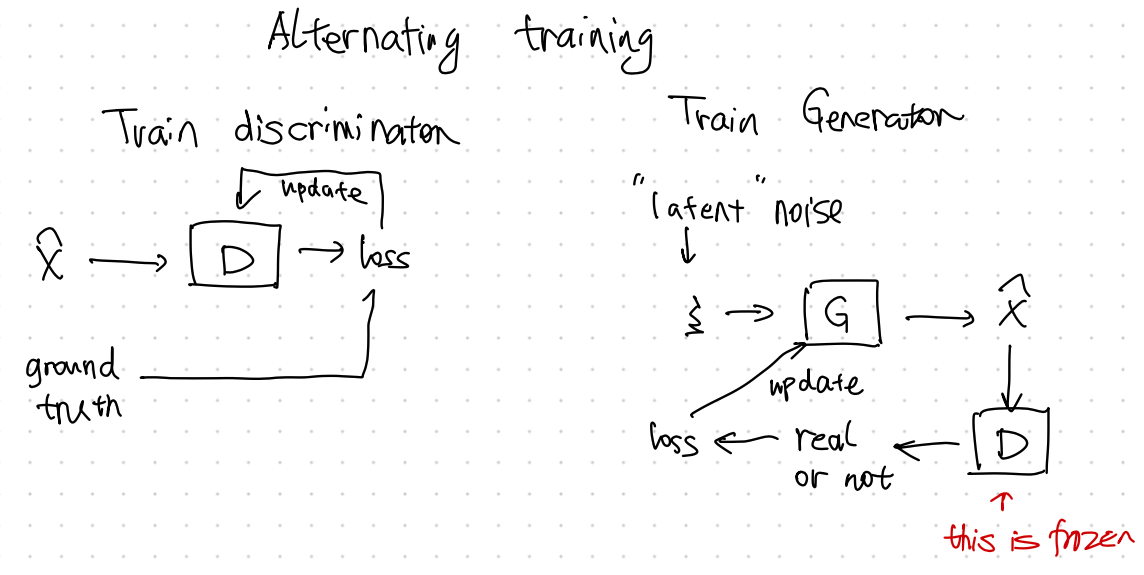GAN
We have built a site dedicated for self-supervised learning: https://neuronstar.github.io/cpe-docs .
The task of GAN is to generate features $X$ from some noise $\xi$ and class labels $Y$,
$$\xi, Y \to X.$$
Many different GANs are proposed. Vanilla GAN has a simple structure with a single discriminator and a single generator. It uses the minmax game setup. However, it is not stable to use minmax game to train a GAN model. WassersteinGAN was proposed to solve the stability problem during training1. More advanced GANs like BiGAN and ALI have more complex structures.
Vanilla GAN
Minmax Game
Suppose we have two players $G$ and $D$, and a utility $v(D, G)$, a minmax game is maximizing the utility $v(D, G)$ for the worst case of $G=\hat G$ that minimizes $v$ then we have to find $D=\hat D$ that maximizes $v$, i.e.,
$$\underset{G, D}{\operatorname{minmax}} v(D, G).$$
The loss for vanilla GAN is the minmax loss
$$ \underset{G, D}{\operatorname{minmax}} \mathbb E_{x\sim P_{data}} \left[ \ln D(x) \right] + \mathbb E_{z\sim p_z} \left[ \ln ( 1- D(G(z)) ) \right]. $$

Illustration of GAN
BiGAN
BiGAN uses one generator, one encoder and one discriminator2.

Illustration of BiGAN
Arjovsky2017 Arjovsky M, Chintala S, Bottou L. Wasserstein GAN. arXiv [stat.ML]. 2017. Available: http://arxiv.org/abs/1701.07875 ↩︎
Liu2020 Liu X, Zhang F, Hou Z, Wang Z, Mian L, Zhang J, et al. Self-supervised Learning: Generative or Contrastive. arXiv [cs.LG]. 2020. Available: http://arxiv.org/abs/2006.08218 ↩︎
- Liu2020 Liu X, Zhang F, Hou Z, Wang Z, Mian L, Zhang J, et al. Self-supervised Learning: Generative or Contrastive. arXiv [cs.LG]. 2020. Available: http://arxiv.org/abs/2006.08218
- Arjovsky2017 Arjovsky M, Chintala S, Bottou L. Wasserstein GAN. arXiv [stat.ML]. 2017. Available: http://arxiv.org/abs/1701.07875
- Probability Estimation
wiki/machine-learning/adversarial-models/gan:L Ma (2021). 'GAN', Datumorphism, 08 April. Available at: https://datumorphism.leima.is/wiki/machine-learning/adversarial-models/gan/.